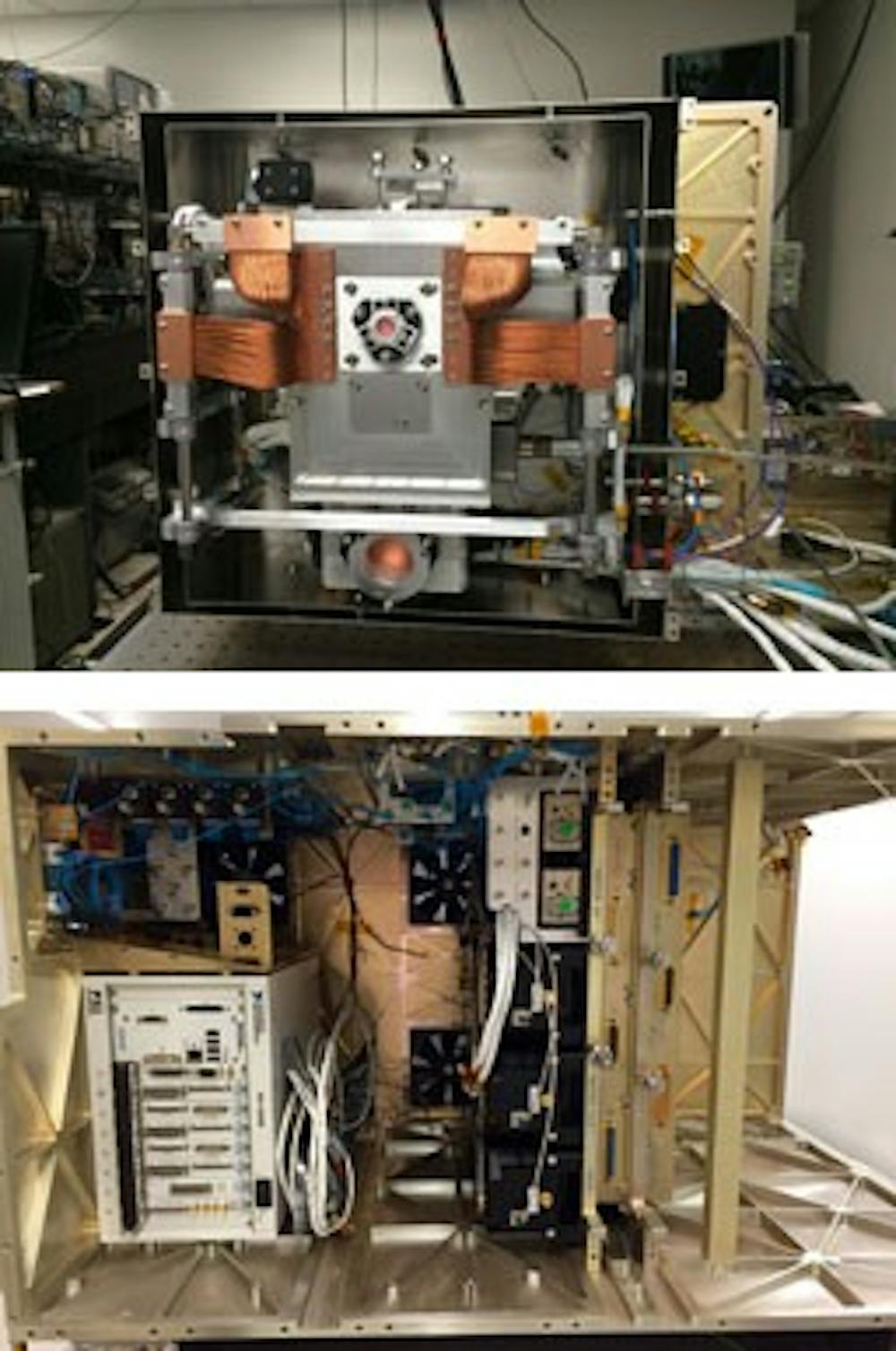NASA’s Cold Atom Laboratory aims to create an environment with minimal gravity and temperatures nearing absolute zero — about negative 273 degrees Celsius — in order to examine how atoms behave under these conditions. Assoc. Physics Prof. Cass Sackett was chosen as one of several investigators who will get to conduct experiments in the CAL when it is sent to the International Space Station next year. Although the experiments will performed in space, they will be remotely conducted on Earth which will allow investigators like Sackett to see firsthand how these atoms behave in such an extreme environment.
“Normally you think of atoms as running around as really tiny particles, but as they get colder and colder, which means slower and slower, they act more like waves instead of particles,” Sackett said.
If these experiments were performed on Earth, and if the atoms slowed down too much, the atoms would fall due to the strength of gravity. By performing these experiments in space where the effects of gravity are minimal, the atoms are able to remain suspended in midair significantly longer allowing for improved results.
One of Sackett’s goals is to see just “how cold you can get.”
“A big set of experiments I want to do is to explore [the limits that exist] and see how cold we can make the atoms, and hopefully break the record for coldest mass ever produced which is currently in the neighborhood of 100 pico kelvin — which is about 10-11 degree Celsius above absolute zero — which is pretty cool,” Sackett said.
By studying these cold atoms, scientists can make remarkable observations.
“Cold atoms have allowed physical phenomena to be observed with unprecedented clarity,” Physics Prof. Thomas Gallagher said. “The best known example is Bose Einstein condensation, which was predicted, but never observed as cleanly as with cold atoms.”
This field of study — where physicists learn more about atoms and how they interact with the environment, otherwise known as quantum mechanics — is primarily what the CAL intends to explore.
The CAL is being built by the Jet Propulsion Laboratory in Pasadena, Calif. and is being funded by NASA to investigate this quantum phenomenon as well as performing other experiments to take advantage of the microgravity environment in space.
According to Sackett, future experiments for the lab include utilizing atom interferometry to measure factors of the environment. Atom interferometry is a technique whereby atoms are forced to behave more like waves as opposed to particles, thus exhibiting properties such as interference.
“One of the things you can do with the waves is to split it into two parts like one goes that way and the other goes a different way,” Sackett said. “And when they come back together and overlap, they get this interference effect where if the crests of the waves line up it makes a bigger wave, but if the crests and the trophs line up they cancel out.”
Atom interferometry can be examined in-depth in this lab due to temperatures being within a billionth of a degree above absolute zero, which forces atoms to behave like waves.
“It turns out if you [make an atom behave like a wave, split it apart and then allow it to rejoin], the way the waves align is really sensitive to the environment they were in while they were separated and you can measure things about that environment, like an easy one is measuring gravity,” Sackett said.
By studying how these wave parts interact with one another, scientists can measure the strength of interference and potentially gain a clearer understanding on how these atom waves behave differently than they do as particles, which is the form that they often take on Earth.
The CAL is not limited to projects involving space. Using the satellites orbiting the Earth, this lab can collect data about the constantly changing distribution mass of the Earth to see things such as ice caps melting, sea levels rising and even the Earth’s core rotating.
With the CAL expected to launch this upcoming February, this event should serve as a strong stepping stone for the understanding of quantum mechanics, and even space-based navigation.
“This first version is going to be a principle, sort of a demonstration that it can be done and the hope is that the second generation will be able to make some measurements that will outclass anything that can be done on Earth,” Sackett said.







